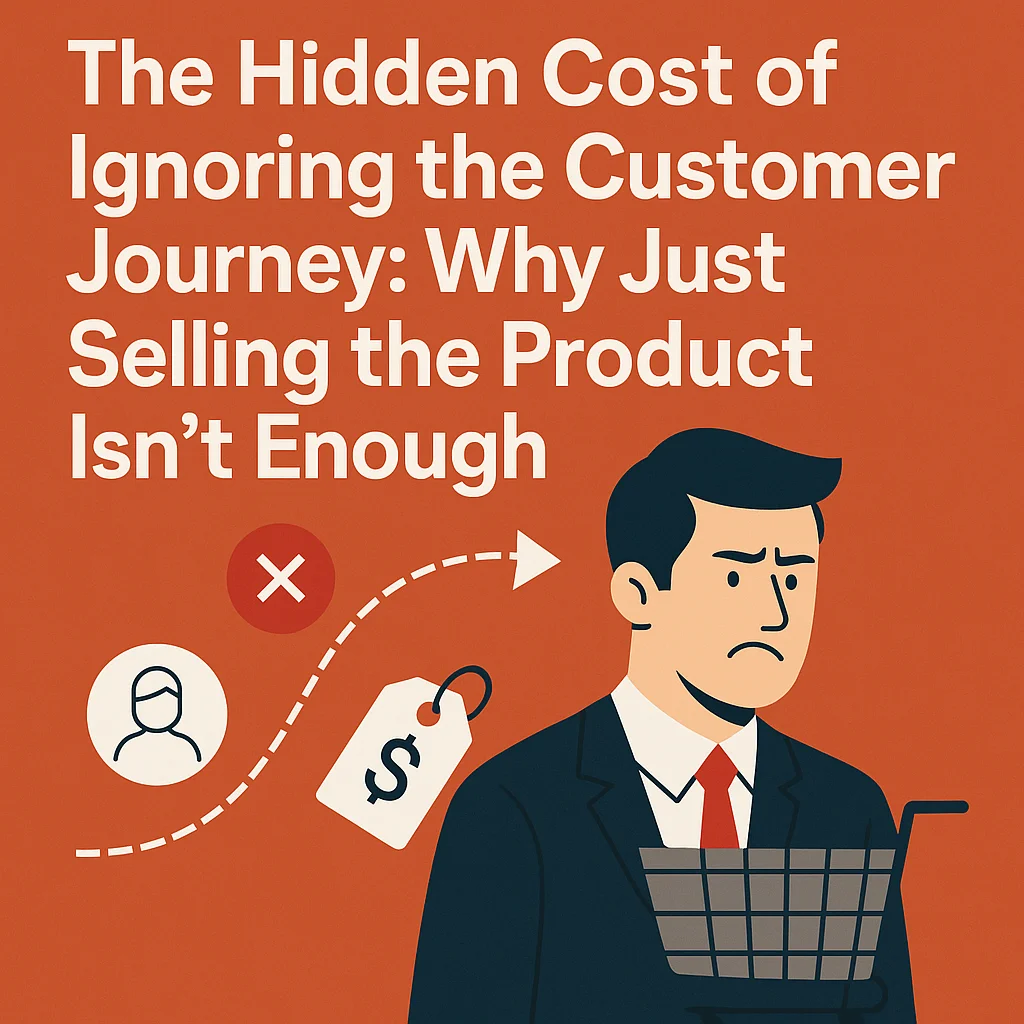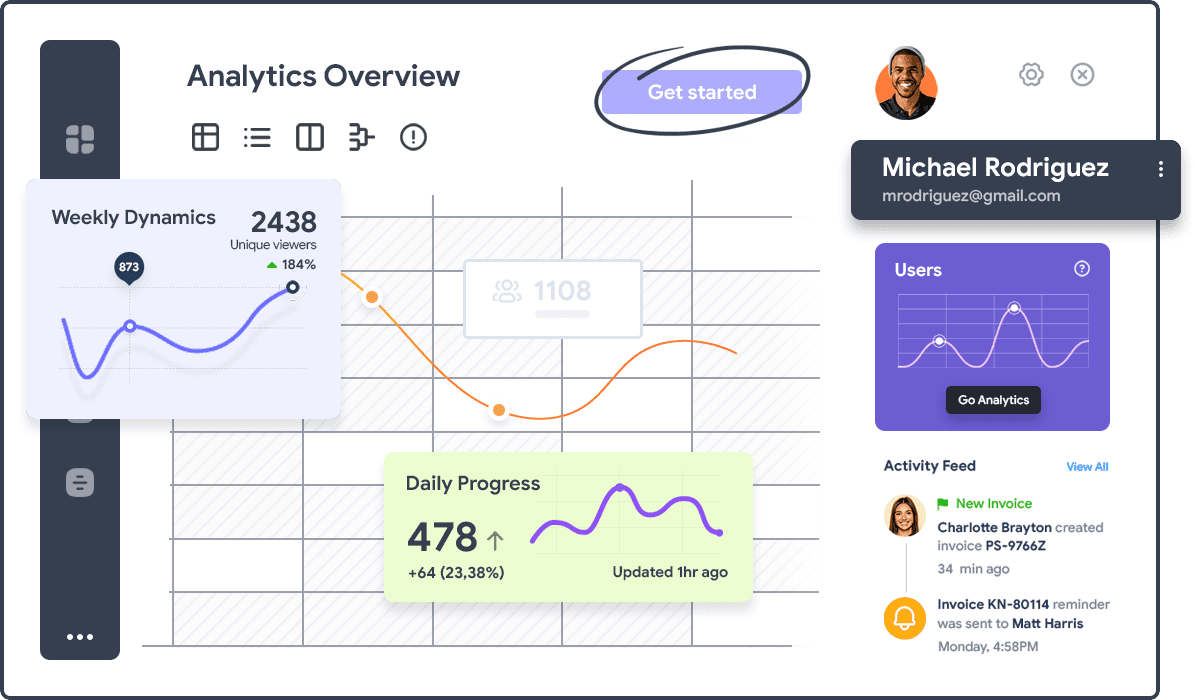You’ve probably seen it before—maybe you’ve even done it yourself. A business launches a great product, spends a small fortune on ads, builds a slick website, and pumps all their energy into driving traffic to that one product page. But sales don’t skyrocket. Customers come, they bounce, and if they buy, they rarely return.
Why? Because the business focused on selling the product and forgot about the most important piece of the puzzle: the customer journey.
Let’s break this down—not just as a digital marketing principle, but as a hard truth for every business that’s serious about sustainable growth.
What Is the Customer Journey, Really?
The customer journey isn’t just some fluffy marketing buzzword. It’s the entire experience your customer has with your brand—from the moment they first hear about you to long after they’ve made a purchase.
It’s what they feel, what they understand, and how they interact with your business across every single touchpoint. It’s how you make them feel seen, understood, and valued. It’s what turns a one-time buyer into a brand loyalist—and what separates thriving brands from those constantly stuck in survival mode.
When You Only Focus on the Sale…
Let’s say your only concern is getting people to click “Buy Now.” You might get some traction. You might even get a few wins here and there. But here’s what else you’re signing up for:
1. High Churn, Low Loyalty
Customers who feel like just another transaction don’t stick around. They’re not going to tell their friends. They won’t leave reviews. And the second a competitor offers something cheaper, slicker, or easier—they’re gone.
2. No Brand Equity
If your customers can’t remember your name, your story, or what made them choose you in the first place, you’re not building a brand—you’re running a vending machine.
3. Price Wars and Profit Leaks
When you don’t offer a better experience, the only thing you can compete on is price. And let’s be honest—that’s a race to the bottom.
4. Marketing Fatigue
You burn out your team trying to constantly feed the machine with new promotions, new offers, new sales gimmicks… because there’s no natural momentum or loyalty to keep customers coming back.
5. Poor Word of Mouth
No journey means no connection. And no connection means no emotional investment. You can’t buy love, and if people don’t love the way you made them feel, they’re not talking about you—at least not in a good way.
So What Does Focusing on the Customer Journey Actually Look Like?
Let’s flip the script.
🔍 It starts with empathy
You stop thinking like a seller and start thinking like your customer. What are they really trying to solve? What frustrates them? What scares them? What would make them say, “Damn, these people get me”?
🧭 You map it out
Where are they finding you? What happens when they land on your site? Is your messaging speaking their language, or is it shouting features they don’t care about? Are you answering their questions before they even have to ask?
💬 You build conversation, not just conversion
Chatbots, lead magnets, onboarding flows, nurturing emails—these aren’t just tools. They’re opportunities to build trust. Use them to create dialogue, not just pitch-fests.
🤝 You invest in post-sale engagement
Customer experience doesn’t end at checkout. How do you welcome them? Do they feel supported after the sale? Are you checking in, educating, or surprising them with value they didn’t expect?
Real Talk: This Isn’t Optional Anymore
In today’s market, customers are smarter. They’ve got options. And they don’t want to be “sold to.” They want brands that understand them, that help them, that deliver outcomes—not just products.
If you’re not building around the customer journey, your competitor is. And the brutal truth? You don’t just risk losing customers—you risk losing the whole game.
Let Me Give You a Real Example…
I once worked with a company (not naming names, but if they’re reading this, they know who they are) that kept pumping out products like clockwork. New features, new designs, slick branding. But every time we’d look at the analytics, there was a pattern—low retention, high bounce, and zero loyalty.
Why? They didn’t invest in the customer experience. No onboarding. No follow-up. No community. Just a product, a price tag, and a hope people would “get it.”
The support tickets were a mess. Reviews were inconsistent. And the marketing team? Burned out from constantly launching just to survive.
Once we shifted the focus from “product-first” to “customer-first,” everything changed.
-
We added email flows that educated and reassured.
-
We optimized the website for clarity and ease.
-
We created content that supported different stages of the journey.
-
We added automation that actually felt human.
Suddenly, refunds dropped. Reviews improved. Customer satisfaction went up—and so did average order value.
5 Steps to Start Building Around the Customer Journey
Here’s the playbook if you’re ready to stop just selling and start leading:
1. Define Your Ideal Customer’s Story
Who are they before they find you? What’s going on in their life that leads them to search for a solution? What outcomes do they crave?
2. Audit Your Touchpoints
Look at your homepage, product pages, emails, ads, and support responses. Are they focused on you or them?
3. Create Personalized Paths
Not every customer is ready to buy today. Build paths for:
-
Browsers
-
Buyers
-
Repeat customers
-
Evangelists
Use automation, segmentation, and smart content to meet them where they are.
4. Don’t Forget Human Touch
Automation is great, but it can’t replace empathy. Real customer support. Thoughtful follow-ups. Real conversations. These things scale trust in ways software alone can’t.
5. Track the Metrics That Matter
Don’t just measure conversions. Track NPS. Churn. LTV. Time-to-value. The real KPIs that tell you how people feel about your brand.
Final Word: Don’t Just Sell the Product. Sell the Experience.
Products solve problems. But experiences build legacies.
If you’re only thinking about the sale, you’re building a business on sand. When the ad budget dries up or the next shiny object hits the market, you’ll be left wondering what happened.
But if you focus on building trust, value, and a clear journey for your customer—you’ll build something that lasts.
Don’t chase transactions. Build relationships. Because that’s where real growth lives.
Need help mapping out your customer journey or designing an experience that converts?
At Metrotechs, we don’t just build websites or write code—we help brands build trust at scale. If you’re tired of chasing short-term wins and want to build a brand that actually connects, let’s talk.




